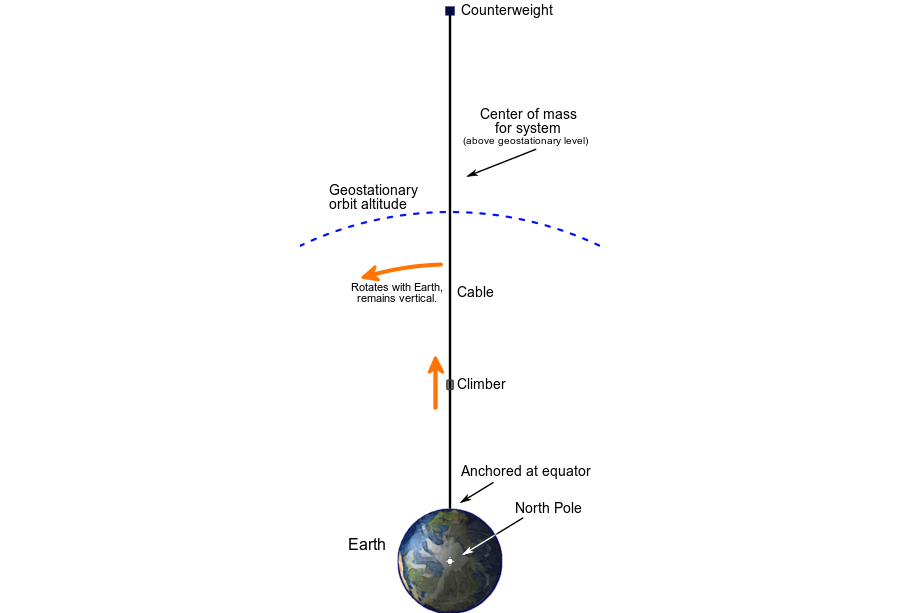
Space elevators are the perfect solution for making asteroid mining economical.
Parking rocks
Building asteroid detection networks is a very large and expensive undertaking. A small group of enthusiasts around the planet might be motivated enough to make it their life's work, but it will be hard for the planet to get going on this, simply because we don't know if a large asteroid will strike Earth this century or even this millenia. But there other factors to motivate us to get this done sooner rather than later.
Humanity is starting to run out of resources it can economically extract from Earth. What we are really short on are rare earth minerals used during manufacturing such of high-tech goods like batteries and computer chips. There are asteroids that have them and other precious comodities, lots of them. The issue that stands in the way of large scale investment in mining asteroids is cost .
Not that expensive
But worries about cost are coming from the point of view of sending rockets into space. Well the times are changing. For a while now we've had ion thrusters. They use comparatively little amounts of propellant and work well over longer periods of time. What if we could scale them up? That requires two things: getting more propellant into space and getting more electricity.
And it so happens that we are now entering the Age of Energy Abundance. Big money is pouring into development of commercial fusion reactors. The old style tokamaks and stellarators have improved and a vast array of new approaches is being tried. To see for yourself follow the links below the pictures in posts of this site. We are now at the Cambrian explosion of fusion technologies and (as we are all aware) are very motivated to get them working.
The next critical piece is to get fusion working in space. And I believe we will solve that issue as well, and quickly.
Getting propellant to (and resources from) orbit is a harder task. Rockets are expensive and unreliable. They are getting better but fundamentally you have to burn lots of fuel to get much less payload into space. Returning form space is currently a dangerous task. Fundamentally rockets are not a sustainable, long term solution.
The perfect solution to this issue has been known to us for a while - space elevators. The science behind them is pretty simple and there are two stable equilibrium points on the globe that will make it feasible to get started (one near the Galapagos and one not too far from the Maldives).
There are really two things that are needed for space elevators to work. An a good counterweight and good materials for the thread. Our materials science is now getting virtually daily improvements. I believe that soon we will have the materials light and strong enough to run the length of the elevator.
And a perfect counterweight is the asteroid to be mined itself. We just have to invest enough into anchoring the first one and everything will be streamlined from there because from that point on we'll be able to use the first Space Elevator for delivering cargo into space. For initial delivery soon we will have the tech to get the needed equipment into space in large quantities in an economical way.
Good for the planet
Mining asteroids is both profitable and good for the environment. Once space elevators are in place, delivering materials to and from orbit will be both economical and eco-friendly. To begin with we just have to invest a bit more into capturing asteroids that are already flying by, instead of going all the way to the nearest asteroid belt to get them. We need to detect them well before they get near Earth, with enough time to get the thrusters to them to park them nearby.
| Previous |  |
Next |